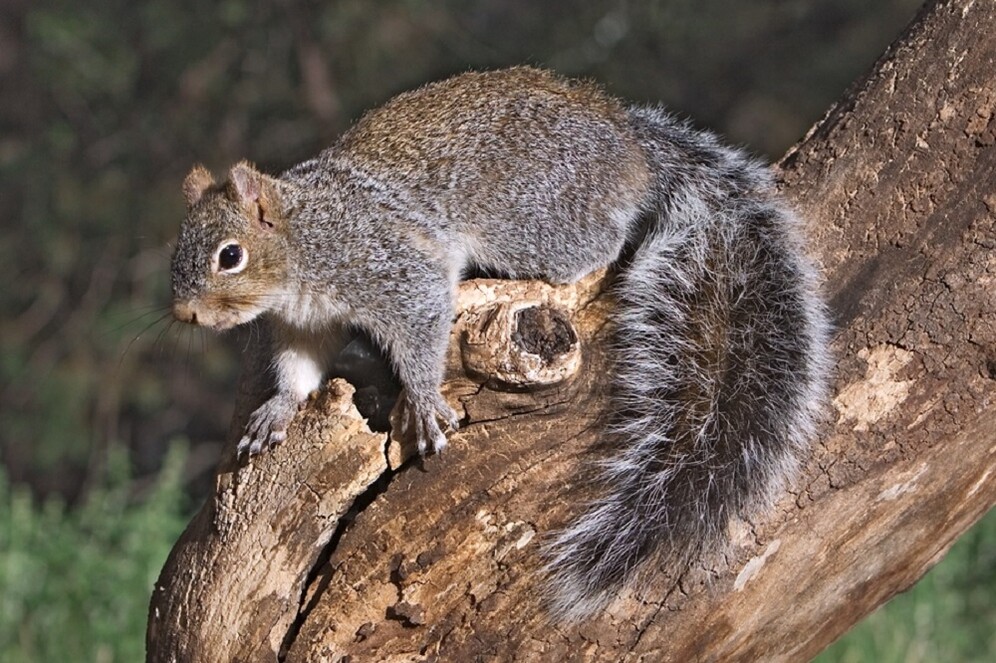As if COVID wasn’t enough: plague and other ancient diseases we almost forgot about

The year that has seen the world plagued with COVID-19 is throwing more curveballs. The latest plague is more literal than biblical: a man in California has been diagnosed with bubonic plague. It’s the same plague that triggered the “Black Death” pandemic in the mid-1300s claiming an estimated 50 million lives in Europe.
Reportedly, the affected person is an outdoorsy type who often hikes with his dog in the Tahoe Keys area in South Lake Tahoe, California. These days people usually contract plague from fleas infected with the bacterium Yersinia pestis. They get the disease from biting wild rodents like chipmunks, mice, rabbits and squirrels. It is suspected the unlucky man must have been infected by a flea that hitched a ride in his dog’s coat.

Despite sounding like a vestige of the Middle Ages, the plague is still naturally present in nature, and the only way to protect oneself from it is by minimising contacts with rodents and avoiding exposure in the areas where the pathogen is present. The news of the case in California (the first in five years) came shortly after the report of someone in New Mexico dying of the plague in the second case in the state this year. At the start of July, a Chinese herdsman from Bayannur in Inner Mongolia was as confirmed to have contracted the plague. Local health authorities issued a warning against hunting marmots and consuming their meat, as the animals are known carriers of the disease. Similar cases have been registered in the Khovd Province of Mongolia at the beginning of August.
The disease that came to stay
Although most prevalent in Africa and with isolated cases in Asia and South America, the plague is no stranger to the South West United States. It first arrived in America on steamships in 1900. The disease brought by rats travelling from Asia to San Francisco caused the United States’ first epidemic. Initially, it was believed only Asians were susceptible to plague, as the European ancestors of the white Americans must have at some point survived the Great Plague that ravaged the Continent and passed on some immunity. There was also a racist perception of Chinese immigrants as being unsanitary, hence, more susceptible to the disease. The initial outbreak was downplayed both by authorities and locals, resulting in a belated response and a widespread epidemic. Although the disease was largely contained by 1908, the virus stayed in the country for good. The last urban outbreak caused by rats was registered in Los Angeles in 1924-25, but since then exposure to the plague in the US was associated with wild rodents.
Though plague outbreaks have become increasingly rare, the highly contagious disease shouldn’t be taken lightly. Although treatable with modern antibiotics, the plague proves deadly in 90 per cent of cases if not treated. Infected flea bites or contact with meat or fluids from contaminated animals cause bubonic or septicemic plague varieties, while cough droplets produced by people who’ve developed plague pneumonia, bring about what is knowns as pneumonic plague. Although this type of spread hasn’t been documented in the USA for almost 100 years, it still frequently occurs in Africa.
Plague - just one of the slew
But why is plague still a thing in 2020? The US Centers for Disease Control explains the bacteria persist because it can “…circulate at low rates within populations of certain rodents <…>. These infected animals and their fleas serve as long-term reservoirs for the bacteria”. Which brings us to the topic of zoonotic diseases – the diseases with the potential of hopping from animals to humans. Conspiracy theories apart, the new coronavirus SARS-CoV-2 that causes COVID-19 is considered to be one of them, having most likely spread to humans from infected bats by way of pangolins. The same is true for the two previous coronaviruses - H1N1, had likely originated in pigs and spread to humans in 2009, and MERS, discovered in 2012 and also hosted by bats.
Experts suggest 80% of the emerging infectious diseases prominent in the last 20 years, are of a zoonotic type. All in all, scientists have identified over 200 zoonoses – infections caused by viruses, bacteria, parasites, fungi or prions that are transferred directly or indirectly to humans from animals. The ones that have at different times been a cause for global concern are Ebola and HIV.
HIV causing AIDS is believed to have crossed the barrier by hopping from chimpanzees hunted for meat in Central Africa to humans who were in contact with their blood. According to the World Health Organization, in 2018, 37.9 million people around the world live with HIV. There’s still no vaccine against it, but its significance has forced countries and private foundations to allocate billions of dollars to research. To date, more than 40 potential vaccines have been tested, and several more are currently underway, so an HIV vaccine might emerge sooner rather than later.
Ebola, a zoonotic disease that may have spread to humans from infected bats or infected primates, exploded across West Africa in 2014. Six years later, two vaccines capable of preventing or reducing the disease’s occurrence have been approved, while several more are in the making. Just like HIV, the Ebola virus got a great deal of attention and funding, which contributed to fast-tracking the research that led to the vaccines’ development. Plus, compared to HIV, it was an easier nut to crack.
Leprosy? You must be joking…
Another “medieval” disease that very few are aware still lingers on is leprosy, or as it is now called Hansen’s disease. It crops up now and then, averaging 50 to 100 cases a year in the US. However, according to WHO, in 2018, 208,619 new leprosy cases were registered globally in 159 countries. The only known animal to carry the virus, causing the ancient disease that results in skin and nerve damage is the armadillo. The good news is that 95% of people are immune to the Mycobacterium leprae that causes leprosy. As for the unlucky few who contract it from animals or untreated leprosy patients, they may carry it for years before the first signs of infection appear. And, most importantly, these days, there are effective ways to treat it.
The bad news is that being relatively rare diseases, bubonic plague and leprosy are unlikely to attract enough buzz and funding to warrant the creation of vaccines. Despite astonishing new weapons available to virologists and immunologist, an average $1 billion and ten years is needed to develop a vaccine. It is more likely the money would be spent on imminent threats like tick-borne Lyme disease that infects up to 300,000 Americans each year, than the rare, albeit frightening diseases from the past that mostly plague poor folks in faraway lands.
Without vaccines for all ills, is there a way to prevent the next pandemic?
Amid the ongoing COVID-19 pandemic it’s terrifying to think another disease like the plague, could start marching across the globe. There’s a consensus among epidemiologists that relatively rare ailments with reliable treatment protocols aren’t a cause for concern. However, given the recent epidemic in Madagascar caused by a strain of bubonic plague with high-level resistance to streptomycin – the antibiotic used as a first-line treatment, - a global epidemic not unlike the one that left medieval Europe in tatters, isn’t entirely out of the question.
However, in the case of zoonotic diseases, like the plague and COVID-19, experts agree the best way to protect oneself is by limiting contacts with wild animals, which, in turn, often happens when humans invade formerly wild territories. Thomas Gillespie, associate professor at Rollins School of Public Health, says “The primary risks for future spillover of zoonotic diseases are deforestation of tropical environments and large-scale industrial farming of animals, specifically pigs and chickens at high density.” Remember the first detected outbreak of COVID-19 sprang from a live animal market in Wuhan where many species of wild animals were sold for human consumption. Wildlife protection and the preservation of animals’ natural habitats could be one of the surest ways to curb the spillover of zoonotic diseases and prevent outbreaks of deadly diseases from becoming a new normal.